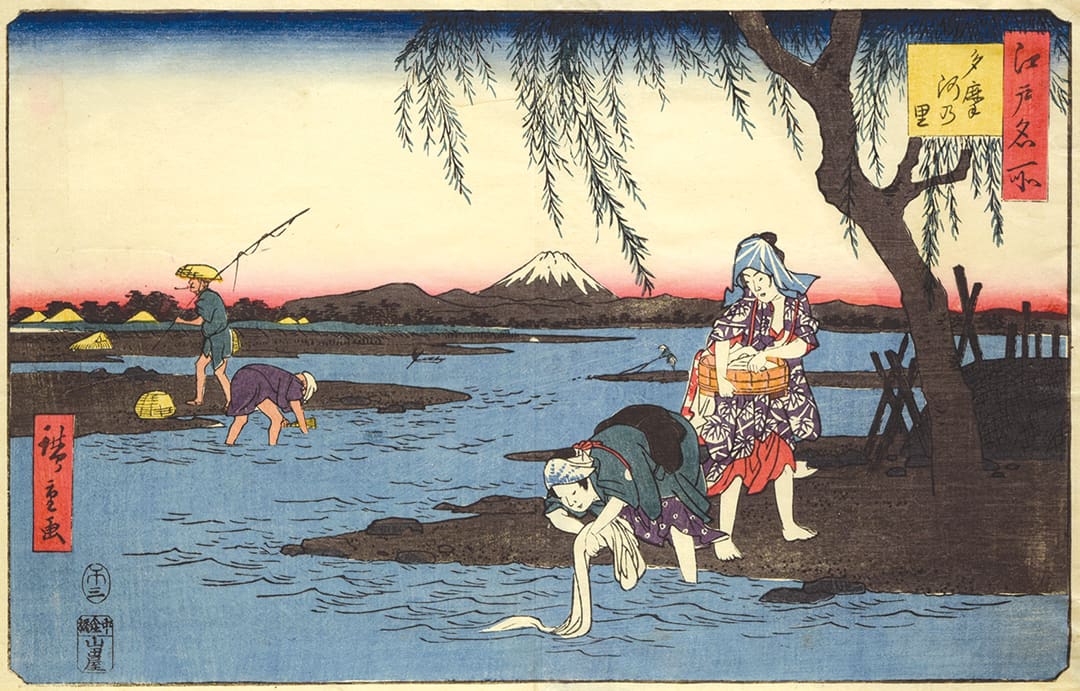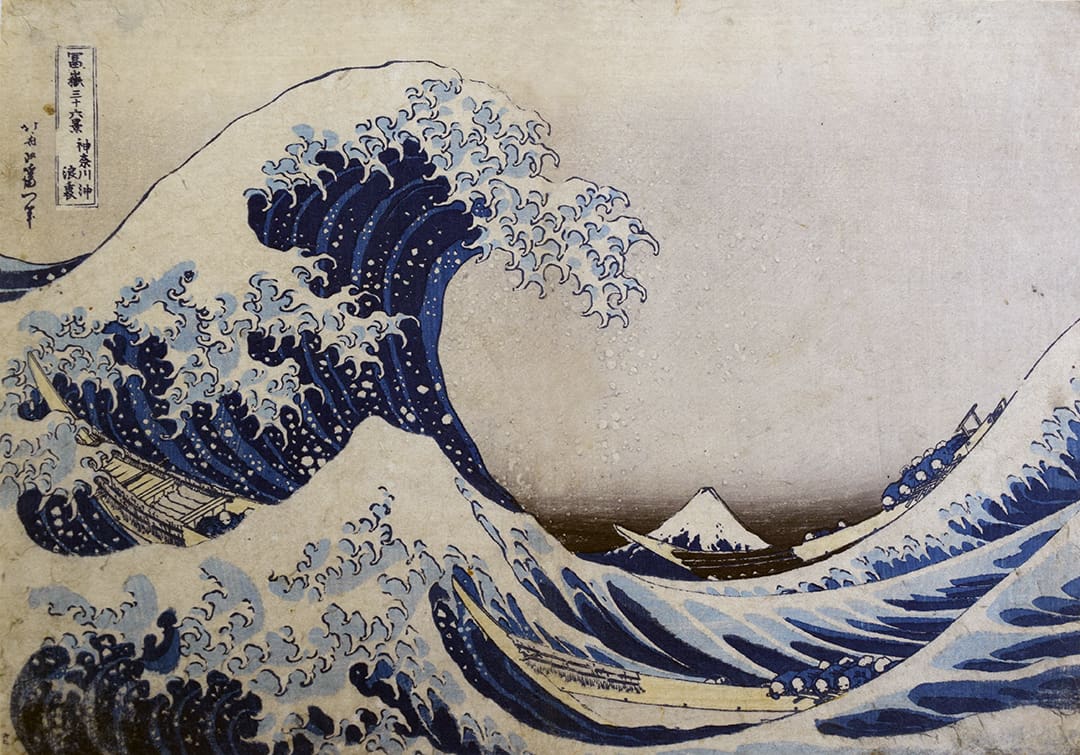Jane L. Stern Gallery
Floating Beauty examines historical perspectives on women and their depiction in art in Edo Period Japan (1615–1858). Made up entirely of woodblock prints created in the ukiyo-e style, this exhibition highlights female characters in literature, kabuki theatre, and poetry; the courtesans and geisha of the Yoshiwara district; and wives and mothers from different social classes performing the duties of their station, in order to gain some insight into the lives of women in pre-modern Japan.
In the tradition of ukiyo-e, women are most commonly represented in the bijinga genre, meaning “pictures of beautiful women.” Featured in these prints are beautifully depicted courtesans with elaborate hairstyles, heavy make-up, and highly decorative clothing. Looking beyond the bijinga, this exhibition shows that women in Edo society were hard working and industrious individuals. Society scorned idleness in women of all ages, and even high-ranking females were required to perform a litany of tasks. Women were expected to be subservient but not weak; weakness would not run a demanding household or manage business affairs.
Over fifty woodblock prints will be featured in the exhibition, including works by ukiyo-e masters Suzuki Harunobu, Kitagawa Utamaro, Katsushika Hokusai, Utagawa Kunisada, Kikugawa Eizan, and Utagawa Hiroshige. The entire exhibition is taken from the permanent collection of the Reading Public Museum in Reading, Pennsylvania, who organized the exhibition.

